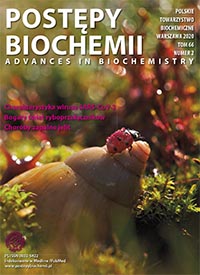Regulatory mechanisms of photosynthesis light reactions in higher plants
DOI:
https://doi.org/10.18388/pb.2020_325Abstract
The light phase of photosynthesis is a key energy process in higher plants. Its purpose is to convert light energy into chemical one stored in
ATP and NADPH molecules, which are then used to assimilate CO2 and in numerous metabolic processes. Maintaining optimal photosynthesis
performance requires strict regulation of thylakoid membranes organization and rapid response to changing environmental conditions.
The main factor affecting photosynthesis is light, which, if applied in excessive amounts, leads to a slowdown in the process. Therefore,
plants have developed many protective mechanisms regulating the light reactions of photosynthesis and operating at the level of light energy
absorption, electron transport, and the distribution and use of reducing power. These include, among others: (i) non-photochemical energy
quenching regulating the amount of excitation energy delivered to the photosystems; (ii) âstate transitionâ process redistributing excitation
energy between photosystems; (iii) redundant electron transport pathways responsible for maintaining redox balance in chloroplasts. All
these mechanisms, in combination with antioxidant systems, are designed to maintain the function of the photosynthetic apparatus in adverse
growth conditions.
Downloads
Published
Issue
Section
License
Copyright (c) 2020 Advances in Biochemistry

This work is licensed under a Creative Commons Attribution 4.0 International License.
All journal contents are distributed under the Creative Commons Attribution-ShareAlike 4.0 International (CC BY-SA 4.0) license. Everybody may use the content following terms: Attribution — You must give appropriate credit, provide a link to the license, and indicate if changes were made, ShareAlike — If you remix, transform, or build upon the material, you must distribute your contributions under the same license as the original. There are no additional restrictions — You may not apply legal terms or technological measures that legally restrict others from doing anything the license permits.
Copyright for all published papers © stays with the authors.
Copyright for the journal: © Polish Biochemical Society.




